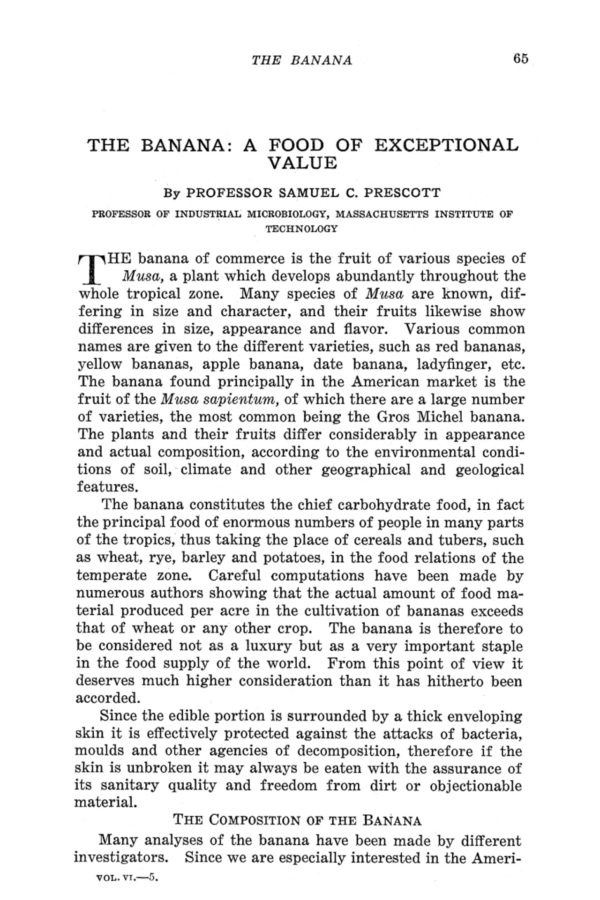Functional food, superfood, future food – what does it all mean?
Business development • Mortification is a thing of the past. Today’s ‘healthy foodies’ want to optimise food for the best performance – and enjoy it at the same time. Of course, sugar reduction is an essential part of conscious consumers’ quest for guilt-free indulgence. But there is so much more. In this article, we take a closer look at some trends that you, as a professional in the food industry, should keep a tab on.
The food we eat has been developed, refined and modified for at least 10,000 years. Today, development is going faster than ever. The food should make us healthier, more beautiful and happier. More and more people are ‘healthy believers’, with a pronounced interest in the environment, sustainable lifestyle and health. They move about freely between concepts such as functional food, superfood and future food. Do you move about just as freely? If not, here’s an article just for you!
Superfood
The term superfood is used for foods that contain a lot of nutrients – mainly ingredients that are minimally processed (for example, only dried and ground into powder). There are no exact provisions that food must meet to be called superfood, and the term is sometimes criticised for being mostly a buzzword in marketing. Nevertheless, such words can serve as a signal, as they categorise and point out foods with common properties that are of interest to consumers.
The world’s first superfood is the banana, which in 1918 was described as ‘a food of exceptional value’ in The Scientific Monthly. This was used by Chiquita’s predecessor – United Fruit Company – in a massive marketing campaign, which further strengthened the banana’s status as a superfood during the early 20th century.
Although superfood started as a flash of genius in a marketing department, it’s today embraced by health-conscious consumers who associate it with great benefits.

The advantage of superfood
When the term became popular in Europe in the early 2000s, it was often exotic foods, such as goji, ashwagandha, maca, chia and quinoa, that were highlighted and that health-conscious consumers took to heart with great enthusiasm and were happy to pay extra for.
Then nutrient-dense foods from our backyard were marketed as superfoods – such as blueberries, nettles, kale and celery. Foods that previously lived a secluded existence suddenly become heroes on the dining table or in our smoothie. Even weeds in our garden, such as nettle and goutweed, were highlighted as extra wholesome.
Examples of superfoods
- Acai
- Blueberries
- Goji
- Algae
- Spirulina
- Kelp
- Chlorella
- Kale
- Roman salad
- Spinach
- Nettle
- Avocado
- Chia Seed
- Hemp seed
- Flax Seed
- Rye
- Oats
- Buckwheat
- Quinoa
- Walnuts
- Almonds
- Brazil nuts
- Garlic
- Turmeric
- Ginger
- Coconut oil
- Avocado oil
- Flaxseed oil
Functional food
Functional food, is food that has health benefits beyond providing nutrition. The concept of functional food comes from a research project in Japan, and had its breakthrough during an international conference in Singapore in 1995.
In Japanese culture, it is thought that food has three purposes:
- Primary purpose
- Nourishe the body and keep life processes going.
- Secondary purpose
- Provide taste, texture and smell.
- Tertiary purpose
- Change physiological properties in a positive direction.
It is food with the tertiary purpose that is called functional food. Functional food must, in addition to nourishing us, change the body’s properties in a positive way.
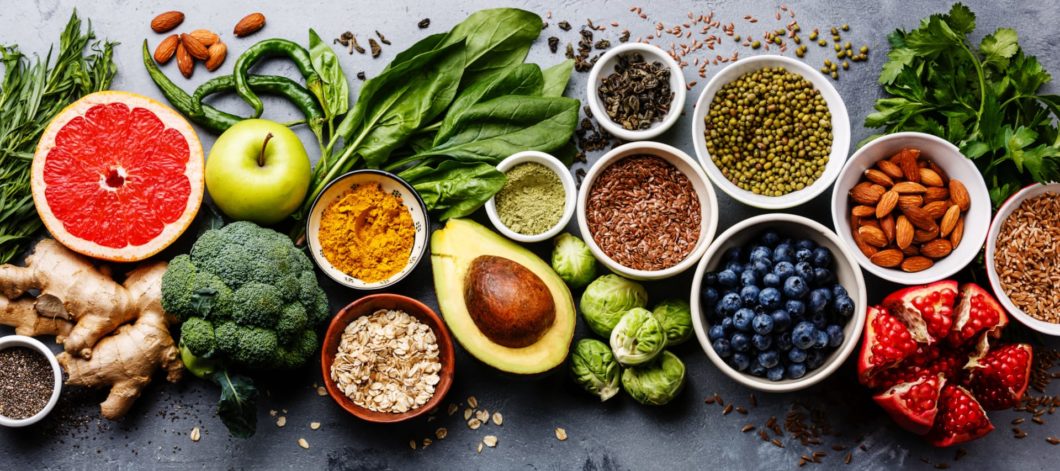
Example of functional food
Legumes
- Chickpeas
- Lenses
- Navy beans
- Black beans
Seeds
- Chia seeds
- Hemp seeds
- Flax seeds
- Pumpkin seeds
Herbs and spices
- Cayenne pepper
- Turmeric
- Ginger
- Cinnamon
Vegetables
- Cauliflower
- Broccoli
- Kale
- Spinach
- Zucchini
Seafood
- Anchovies
- Salmon
- Mackerel
- Sardines
- Cod
Fermented foods
- Kefir
- Kimchi
- Kombucha
- Sauerkraut
- Tempeh
Fruits and berries
- Oranges
- Bananas
- Blueberries
- Goji
- Sea buckthorn
- Kiwi
- Lingon
- Peaches
- Pear
- Cranberries
- Apples
Whole grains
- Buckwheat
- Brown rice
- Couscous
- Oats
- Barley
Drinks
- Chaga
- Green Tea
- Cocoa
Nuts
- Cashews
- Macadamia nuts
- Almonds
- Brazil nuts
- Pistachio almonds
Bioactive substances in functional food
Studies on the effect of diet among different populations show that those who eat fruit, vegetables, whole grains and fish have better health and often a longer life. What substances in the food cause this? Finding answers is a quest that universities and companies are collaborating on in various research projects.
Some types of substances that researchers are interested in are:
- Omega-3 and omega-6 fatty acids – which, among other things, affect the regulation of blood pressure, how the kidneys work and our immune system.
- Beta-glucans – which can lower blood cholesterol levels.
- Flavonoids and antioxidants – which protect our cells against oxidative stress.
- Probiotics – which supply beneficial bacteria to the colon.
- Prebiotics – which nourish the beneficial bacteria in the colon.
Biotechnology and improved food
Research on bioactive substances inspires producers to adopt biotechnology to change, add or subtract, and increase or decrease substances in foods that optimize them. It can be as simple as adding iodine to salt, omega-3 to eggs or vitamin D to milk. Or replace sugar with sweetened fibres.
Future food
Researchers estimate that we need to produce 25–70 percent more food in 2050 than today. Then the earth’s population is expected to consist of 9 billion people. It can be difficult to meet the demand for food without developing new types of food. This is where the concept of future food comes in.
Plant-based meat
Meat has been a luxury in most cultures, during most times. Few people in history have had the same access to meat as the rich part of the world has today. But meat is an inefficient way of feeding a growing population, as raising livestock requires a lot of agricultural land and water. Not everyone agrees with this, but we still see an increased interest in ‘plant-based meat’. Plant-based meat consists of vegetarian ingredients that are processed together to resemble meat as much as possible.

Cultivated meat
Plant-based meat is already on the market. Soon it may be accompanied by cultivated meat. Unlike plant-based ‘meat’, it is real meat. But it does not come from livestock, but is grown from muscle cells.
The first burger with cultivated meat was eaten in 2013. It cost $ 325,000. Since then, the price has fallen rapidly and is starting to approach the magic limit of $ 1 per liter where cultivated meat is expected to become commercially viable.

Farmed fish
We have become accustomed to farmed fish. Above all, we eat a lot of salmon that are raised in fish ponds in Norway. But today you should not be surprised if you visit an ordinary farm and discover that the barn no longer has cows but pools for fish farming. Fish farming is an industry that is still in its infancy.
Soon we will also see plant-based shellfish alternatives. You can already buy ‘shrimp’ made from soy protein and algae.
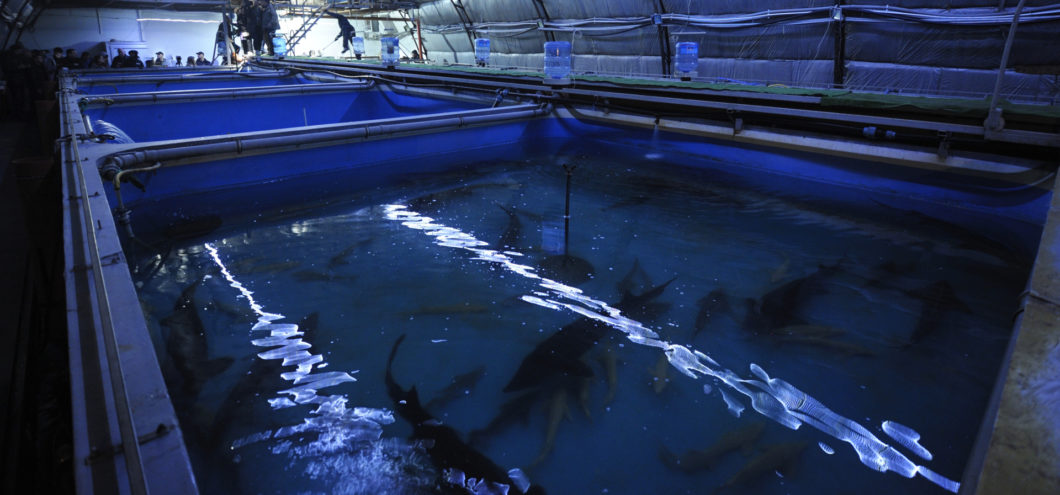
3D food
CandyFab was the first to use sugar in a 3D printer and thus print something edible. But the real breakthrough for 3D printing of food came in 2014 with the project Edible Growth, that showed how technology can be used to improve food.
When the project started in 2014, it was thought that it would take at least 10 years before the technology became common, but already two years later, in 2016, a pop-up restaurant called FoodInk that only served 3D food was opened.
And today, there are companies, such as byFlow, that manufacture 3D printers for food aimed at ordinary households.
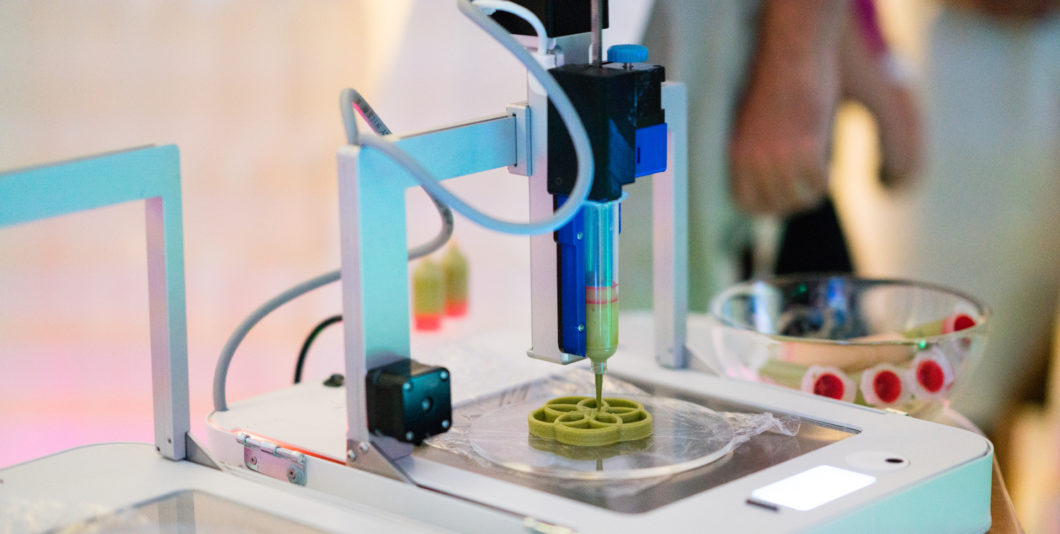
Insects
The need of a growing population for protein requires that we learn to think in new directions, and it has hardly escaped anyone that insects are our next source of protein. In fact, about 2 billion people in the tropical parts of Asia, Africa and South America already eat insects today, according to the United Nations Food and Agriculture Organization.
We who are not as open-minded, and are disgusted by merely the thought of eating living, slimy, winding worms, can take comfort in that we do not have to put our teeth in a crispy roasted cricket, but can instead use protein powder made from insects.
Cricket is the most common insect in insect farms. They are considered as one of the most sustainable sources of protein. And you can raise them at home if you want.
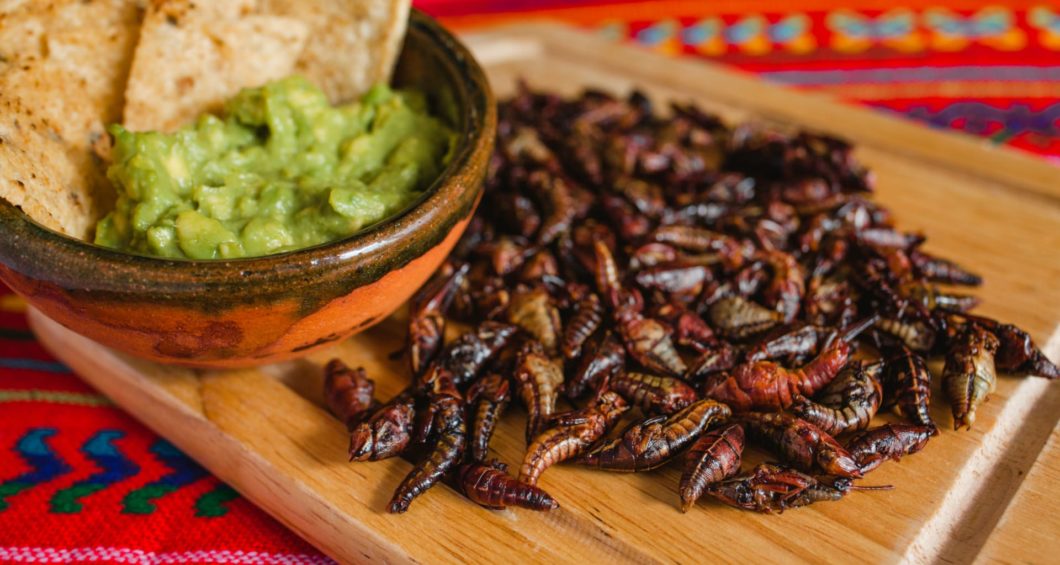
Conclusion
We humans have always been looking for new ways to improve the food we eat. Once upon a time we learned to handle the fire and fry food. Now we try to make the food healthier without sacrificing the taste. It requires new solutions. We at Bayn pull our straw to the pile by developing sweetened fibres, with the goal of helping you to create good food with less sugar.
Please, share this article if you liked it.
[et_social_share]

